

|

|

|

|

|

|

|

|
|
~~~~~~ World Bibliography of Beliefs, Theories and Theologies ~ click pix to enlarge ~~~~~~ Hare Krishna Hare Krishna Mantra in DevanagariThe Hare Krishna mantra, also referred to reverentially as the Maha Mantra ("Great Mantra"), is a sixteen-word Vaishnava mantra made well known outside of India by the International Society for Krishna Consciousness (commonly known as ’the Hare Krishnas’). It appears within many traditions of Hinduism and is believed by practitioners to bring about a higher state of consciousness when heard, spoken, meditated upon, or sung out loud. According to Gaudiya Vaishnava theology, this higher consciousness ultimately takes the form of pure love of God (Krishna). The mantra The Hare Krishna mantra is composed of Sanskrit names in the vocative case: Hare, Krishna, and Rama (in Anglicized spelling. Hare Krishna Hare Krishna Krishna Krishna Hare Hare Hare Rama Hare Rama Rama Rama Hare Hare |
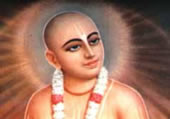
|
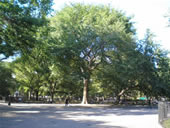
|
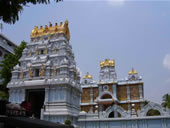
|
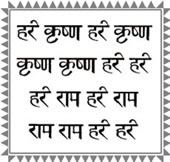
|
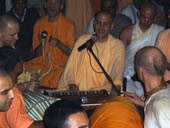
|
|
Rama and Krishna both appear as names of Vishnu in the Vishnu sahasranama and refer primarily to the 7th and 8th Maha Avataras of Vishnu. "Hare" can be interpreted as either the vocative of Hari, another name of Vishnu meaning "he who removes illusion", or as the vocative of Hara, a name of Radha, Krishna’s eternal consort or Shakti. According to A. C. Bhaktivedanta Swami Prabhupada, Hara refers to "the energy of God" while Krishna and Rama refer to God himself, meaning "He who is All-Attractive" and "He who is the Source of All Pleasure". Rama can also refer to Radha-Raman, another name of Krishna meaning beloved of Radha, or as a shortened form of Balarama, Krishna’s first expansion. The mantra is repeated, either out loud (kirtan), softly to oneself (japa), or internally within the mind. Srila Prabhupada describes the process of chanting the Maha Mantra as follows: "Krishna consciousness is not an artificial imposition on the mind; this consciousness is the original energy of the living entity. When we hear the transcendental vibration, this consciousness is revived. This chanting of ’Hare Krishna, Hare Krishna, Krishna Krishna, Hare Hare / Hare Rama, Hare Rama, Rama Rama, Hare Hare’ is directly enacted from the spiritual platform, and thus this sound vibration surpasses all lower strata of consciousness - namely sensual, mental, and intellectual. As such anyone can take part in the chanting without any previous qualification." History Chaitanya Mahaprabhu (1486-1534) The Hare Krishna Tree in Tompkins Square Park under which Bhaktivedanta Swami Prabhupada began the first recorded public chanting of the Hare Krishna mantra outside of India. The mantra is first attested in the Kali Santarana Upanishad, a Vaishnava Upanishad associated with the Krishna Yajurveda. In this Upanishad, Narada is instructed by Brahma (in the translation of K. N. Aiyar): "Hearken to that which all Shrutis (the Vedas) keep secret and hidden, through which one may cross the Samsara (mundane existence) of Kali. He shakes off (the evil effects of) Kali through the mere uttering of the name of Lord Narayana, who is the primeval Purusha". Narada asks to be told this name of Narayana, and Brahma replies "Hare Krishna Hare Krishna, Krishna Krishna Hare Hare, Hare Rama Hare Rama, Rama Rama Hare Hare; These sixteen names are destructive of the evil effects of Kali. No better means than this is to be seen in all the Vedas." The mantra was popularized by Chaitanya Mahaprabhu roughly around 1500 CE when he began his mission to spread this mantra publicly to ’every town and village’ in the world, travelling throughout India, and especially within the areas of Bengal and Orissa. Some versions of the Kali Santarana Upanishad give the mantra with Hare Rama preceding Hare Krishna, and others with Hare Krishna preceding Hare Rama (as quoted above). The latter format is by far the more common within the Vaishnava traditions, within which it is a common belief that the mantra is equally potent when spoken in either order. In the 1960’s an elderly monk known as A.C. Bhaktivedanta Swami Prabhupada, on the order of his guru, Srila Bhaktisiddhanta Sarasvati Thakura, brought the teachings of Sri Chaitanya from India and single-handedly took the responsibility of spreading them around the Western world. Beginning in New York, he encircled the globe fourteen times in the final eleven years of his life, thus making ’Hare Krishna’ a well-known phrase in many parts of the world. The "Hare Krishna" movement A Gaudiya Vaishnava (Hare Krishna) temple at TirupathiMain articles: ISKCON and Gaudiya Math "Hare Krishna" brings to mind, for many, the conspicuous Hare Krishna devotees, who first appeared on the streets of Western cities in the 1960s and 1970s, dancing and chanting with drums and cymbals, wearing saffron dhotis or colourful saris, and selling Bhagavad Gita As It Is and similar literatures. These devotees were members of the International Society for Krishna Consciousness (ISKCON), founded by A.C. Bhaktivedanta Swami Prabhupada. ISKCON was the first organized Vaishnava group to make a large impression outside of India. Now a number of such Vaishnava groups are preaching in the Western world, such as the Sri Krishna Chaitanya Mission and other lineages of the Gaudiya Math. Devotees singing the Hare Krishna mantraFrom a theological perspective Hare Krishna devotees are classified as practitioners of Bhakti Yoga. They are also referred to as Gaudiya Vaishnavas because they follow a line of gurus descending from Chaitanya Mahaprabhu, who appeared in Bengal (Gauda is an old name of Bengal). Vaishnavism comes under the general banner of being a Hindu religion. Most serious ’Hare Krishna’ practitioners live according to strict rules. For example, initiates take vows to abstain from all forms of recreational drugs and intoxicants (including caffeine), from eating meat, fish and eggs, from gambling, and from all sexual relations except for purposes of procreation within marriage. For beginners and non-initiates, how many of these rules are to be followed is left to one’s own discretion, but these four ’regulative principles’ remain as a standard. In terms of general diet among Gaudiya Vaishnavas, onions, garlic, and mushrooms are also generally avoided due to their purportedly adverse effects on the consciousness of the eater. Hippie culture In the 1970s, Hare Krishnas became confused with the hippie subculture. The 1971 Hindi film Hare Rama, Hare Krishna, written and directed by Dev Anand, was shot with many real-life hippie extras. But in fact the genuine Hare Krishna followers were a far cry from hippies. Although Prabhupada was open to anyone, members had to follow the four regulative principles, one of which is "no intoxicants". Elevation and joy were to be derived from chanting God’s holy names. Hare Krishna in popular culture The Hare Krishna mantra appears in a number of famous songs, notably those of The Beatles and George Harrison, and has been at the number-one spot in the UK singles charts on more than one occasion within songs such as My Sweet Lord. One song from 1969 by the Radha Krsna Temple, simply entitled Hare Krsna Mantra reached no. 17 in the UK music chart and appeared on the music show Top of the Pops. It also made the no.1 slot in both German and Czechoslavakian music charts. Further information: Hare Krishna in popular culture Other scriptural references The practice of chanting the Hare Krishna mantra is recommended in the Puranas, the Pañcaratra, and throughout Vaishnava literature in general. For example: "All the grievous sins are removed for one who worships Lord Sri Hari, the Lord of all lords, and chants the holy name, the Maha-mantra."-Padma Purana; Svarga Khanda 50.6 "Hare Krishna Hare Krishna, Krishna Krishna Hare Hare: Whoever chants this mantra, even neglectfully, will attain the supreme goal of life. Of this there is no doubt."- Agni Purana "This sixteen-name, thirty-two-syllable mantra is the Maha-mantra in the Age of Kali, by which all living beings can be delivered. One should never abandon chanting this maha-mantra."-Ananta-samhita "About this divinely spiritual Maha-mantra, which delivers one from material existence, the original guru, Lord Brahma, has said: ’The srutis have declared this mantra to be the best means of deliverance in the Age of Kali.’ Having heard this from Brahma, all the sons and disciples of Brahma, beginning with Narada, accepted the Hare Krishna Maha-mantra and, having meditated on it, attained perfection."-Ananta-samhita "When the sixteen names and thirty-two syllables of the Hare Krishna mantra are loudly vibrated, Krishna dances on one’s tongue"-Stava-mala-vidyabhusana-bhasya; Baladeva Vidyabhusana in Bhaktisiddhanta’s Gaudiya Kanthahara 17:30 |
©